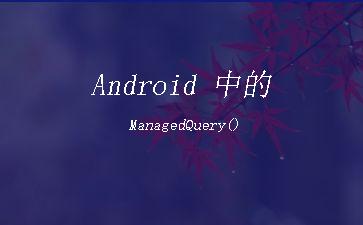
用途:
根据指定的URI路径信息返回包含特定数据的Cursor对象,应用这个方法可以使Activity接管返回数据对象的生命周期。
参数:
URI: Content Provider 需要返回的资源索引
Projection: 用于标识有哪些columns需要包含在返回数据中。
Selection: 作为查询符合条件的过滤参数,类似于SQL语句中Where之后的条件判断。
SelectionArgs: 同上。
SortOrder: 用于对返回信息进行排序。
下面是有关 ContentResolver.query() 和 Activity.managedQuery() 两个方法的区别:
To query a content provider, you can use either theContentResolver.query() method or the Activity.managedQuery() method.Both methods take the same set of arguments, and both return a Cursorobject. However, managedQuery() causes the activity to manage the lifecycle of the Cursor. […]
我也来翻译下:
对于查询一个内容提供者,你可以使用 ContentResolver.query() 或者 Activity.managedQuery() 方法。两种方法都带有相同参数,并且都返回 Cursor 对象。然后,Activity.managedQuery() 方法导致活动管理 Cursor 的生命周期。
今天的文章Android 中的 ManagedQuery()分享到此就结束了,感谢您的阅读,如果确实帮到您,您可以动动手指转发给其他人。
版权声明:本文内容由互联网用户自发贡献,该文观点仅代表作者本人。本站仅提供信息存储空间服务,不拥有所有权,不承担相关法律责任。如发现本站有涉嫌侵权/违法违规的内容, 请发送邮件至 举报,一经查实,本站将立刻删除。
如需转载请保留出处:https://bianchenghao.cn/29979.html
